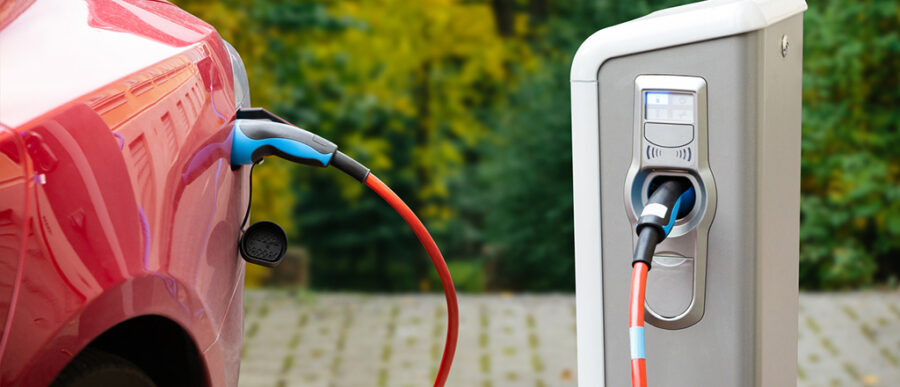Consumers, automakers, and the government will have to work together to pull off President Joe Biden’s ambitious plan to shift the country away from gas-powered vehicles and cut carbon emissions, Wharton management professor John Paul MacDuffie said.
Biden signed an executive order earlier this month that calls for 50% of all new vehicles sold by 2030 to be battery electric, fuel-cell electric, or plug-in hybrid. The Environment Protection Agency and U.S. Department of Transportation also announced the reversal of a Trump-era rollback on emissions standards. The agencies will impose a goal of 52 miles per gallon for passenger vehicles by 2026, a standard that’s even more stringent than President Barack Obama’s 50.8 miles per gallon.
Both measures are part of Biden’s agenda to expand manufacturing, compete with China, and combat climate change. Gasoline-powered vehicles are the single largest source of greenhouse gases in the U.S., according to the EPA. The administration’s plan would cut about 2 billion metric tons of carbon pollution and save about 200 billion gallons of gasoline.
“It’s very ambitious, it’s aspirational, and it’s nonbinding. It’s a goal that’s being set to indicate policy direction or policy enthusiasm or intensity,” MacDuffie said during an interview with the Wharton Business Daily show on Sirius XM. (Listen to the podcast at the top of this page.)
Ford, General Motors, and Stellantis, which owns Jeep and Chrysler, pledged that 40% to 50% of their cars sold by 2030 would be electric, a number that signals their willingness to work with the administration to accomplish shared goals, MacDuffie said. However, car buyers may need more persuasion.
“The demand side, of course, is what we know is the toughest,” said MacDuffie, who is director of Wharton’s Program on Vehicle and Mobility Innovation. “Consumer reluctance, charging infrastructure — that’s where the automakers are saying we need a lot of government support for this, maybe subsidies for purchases, and certainly help getting charging infrastructure into difficult places. We’ll see how much support for EVs comes out of what Congress is doing right now.”
MacDuffie said many consumers suffer from “range anxiety,” a worry that electric vehicles are inconvenient or impractical because they can’t go far without needing a charge. But most of the current EVs can travel about 300 miles on a single charge, which MacDuffie pointed out is more than adequate for most daily commuters.
Still, there are a lot of challenges around charging. Homeowners need to install a dedicated 220 voltage line to charge their EVs, while renters have to rely on the provision of charging stations where they live. And all EV drivers need access to public charging stations along major interstates, in commercial corridors, and in rural areas. Public charging stations are becoming more common in densely populated cities, but the infrastructure is still lacking across most of America. It’s a problem that Biden has recognized, calling for the building of a national network of charging stations as part of the $1 trillion bipartisan infrastructure deal.
“If the government support for charging infrastructure really targets the places that are harder to do, that will give this a boost in terms of consumer confidence,” MacDuffie said. “But the home charging has the high potential for making a lot of people able to access this type of vehicle.”
If charging stations were available along interstates, for example, drivers would be able to take longer road trips in their EVs. But they’re going to have to be patient; it takes up to 30 minutes for an EV to charge at a super-charging station.
“People have to be willing to make some changes in their refueling habits to go with this new technology.” –John Paul MacDuffie
“Obviously, this is the issue that concerns people most,” MacDuffie said, suggesting they can use the charging time to eat lunch or walk around. “People have to be willing to make some changes in their refueling habits to go with this new technology.”
A Competitive Edge
The U.S. lags far behind China and the European Union when it comes to electric vehicle sales. China, once the world’s largest EV market, was surpassed last year by the European Union. MacDuffie said the surge was driven by tighter emissions standards put in place by the E.U., which he called the “world’s pace-setter” on the issue.
He thinks Biden’s plan will help America get into a virtuous cycle: As more charging stations are built, more EVs will be sold, which will bring down the price and encourage others to buy. That momentum will make the adoption curve steeper.
“That’s where we’d see the biggest gains in terms of climate [change], and maybe it’s where we finally see a tipping point in terms of the public perception of these vehicles,” MacDuffie said.



